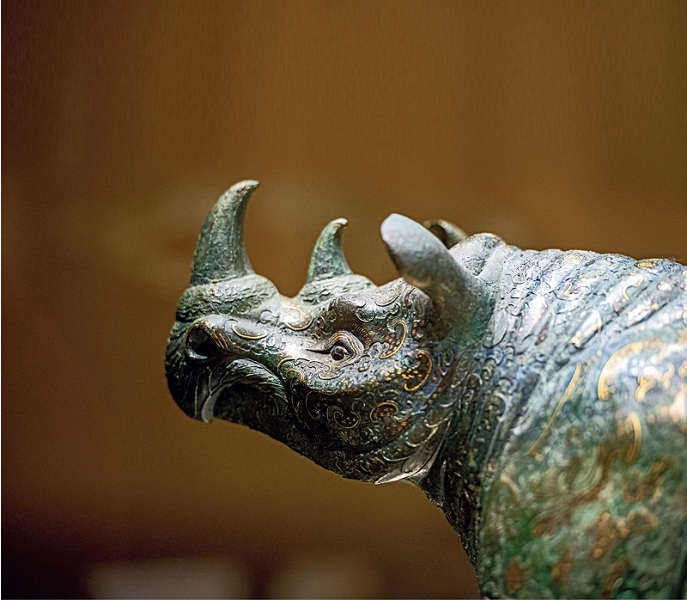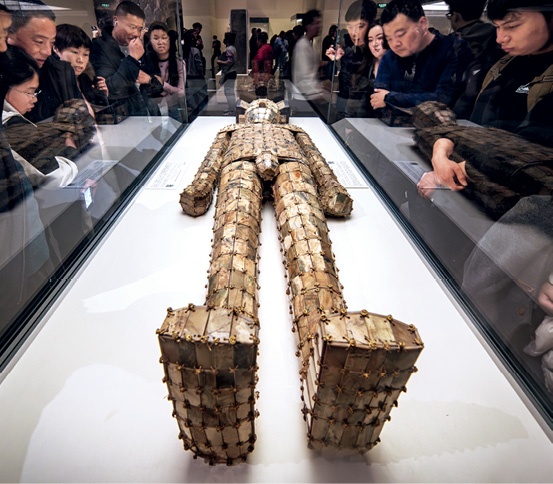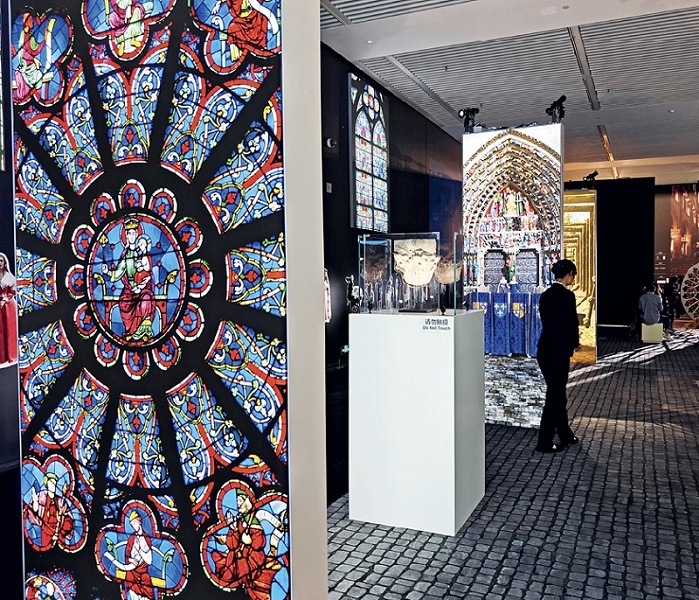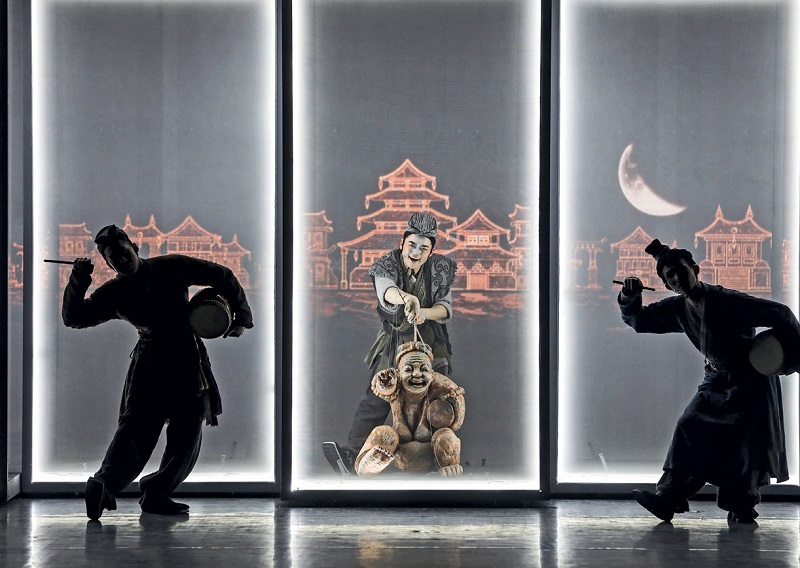
The Bronze Rhino-shaped Zun (wine vessel) is a national treasure on display at the National Museum of China.
Located in the heart of Beijing, the 200,000-square-meter National Museum of China – boasting 48 galleries – ranks among the most-visited museums in China and is one of the world’s largest modern museum complexes.
Built in 1912, the museum now houses a collection of over 1.43 million items, spanning across various categories such as ancient artifacts, and modern and contemporary relics and artworks. It has three permanent exhibitions – “Ancient China,” “The Road of Rejuvenation,” and “The Road of Rejuvenation: New Era,” showcasing the continuity and splendor of the Chinese civilization over the past 5,000 years. Additionally, the museum generally hosts around 50 temporary and traveling exhibitions each year.
Among its vast collection, nearly 6,000 items (or sets) are classified as national first-grade cultural relics. Some of its most famous treasures include the Pottery Jar with Stork Catching Fish and Stone Axe Design, the Eagle-shaped Pottery Ding (a food container), and the Jade Dragon of the Hongshan Culture from the Neolithic period, the Houmuwu Square Ding and the Square Bronze Zun with Four Goats (a sacrificial object) from the Shang Dynasty (c.1600–1100 B.C.), the Pottery Storyteller Beating a Drum from the Han Dynasty (202 B.C. –220 A.D.), the Sancai-glazed Pottery Musicians on Camelback from the Tang Dynasty (618–907), and Empress Xiaoduan’s phoenix crown from the Ming Dynasty (1368–1644).

A crowd of visitors admire the Jade Burial Suit from the Western Han Dynasty on March 5, 2025.
Tech-Based Relic Exhibition
Today, in addition to traditional physical exhibitions, the National Museum of China has been making use of modern technology to offer a window showcasing cultural legacy to visitors.
In May 2023, “The Digital World of the Rhino-shaped Vessel” exhibition opened to the public here. Inspired by the Bronze Rhino-shaped Zun (wine vessel) decorated with gold and silver patterns from the Western Han Dynasty (206 B.C.–8 A.D.) on display in the museum’s permanent exhibition, this digital exhibition illustrates the artifact in various angles from its discovery and functions to casting and decorative techniques and aesthetic designs. It is noteworthy that details of the artifact and the latest research findings on it are presented digitally through various technologies.
“This is the museum’s first intelligent gallery, harnessing various technologies such as the internet, big data, cloud computing, high-definition 3D imaging, environmental monitoring, artificial intelligence (AI), and augmented reality (AR). It offers visitors a new experience by inviting them behind the scenes to get a better understanding of the intelligent technology used to analyze artifacts and the latest research findings,” said Zhu Xiaoyun, a research fellow at the National Museum of China and designer of this tech-based exhibition.
A Creative Product Fever
In recent years, creativity-infused, relic-inspired souvenirs sold at the museum’s shops have emerged as a big hit with visitors. In particular, two elaborate wooden and metal refrigerator magnets, designed after the well-known Ming Dynasty Empress Xiaoduan (1564–1620)’s phoenix crown, have sold over a million pieces since their launch in 2024, making them the museum’s best-selling product in nearly two decades.
This magnet fever also created a selfie fad alluring many visitors waiting in line in front of the crown relic to take photos with the mini replicas and the original artifact. “Creative souvenirs have attracted more people to the museum. We hope that while collecting these products, visitors can also develop an interest in cultural relics and the history behind them,” said Liao Fei, deputy director of the museum’s business development department.
In May 2023, the museum launched a relic-themed musical “Beats of Prosperity” in collaboration with the Communication University of China. The production, inspired by the museum’s star attraction pottery storyteller figurine, recreated the life of folk artists in the Han Dynasty through various genres like drama, musical, dance, and poetry, along with traditional Chinese opera. Donning a headscarf, with a drum under his left arm and a drumstick raised in anticipation in his right hand, the beaming storyteller took center stage at the museum’s theater, bringing history to life for audiences.

The “Notre-Dame de Paris – the Augmented Exhibition opens at the National Museum of China on September 24, 2024. This exhibition features four original statues of Notre-Dame de Paris, three of which are displayed outside of France for the first time.
Educational Activities
Statistics show that the museum’s docents served around 350,000 visitors in 2024. To cater to history and museum enthusiasts who seek more in-depth knowledge beyond standard guided tours, the museum offers more specialized educational programs, including lectures, study tours, and archaeology camps that provide opportunities for more hands-on experiences.
Throughout 2024, the museum invited 45 in-house and external experts to around 100 “Expert Guide Week” events centering around 50 themes relevant to the museum’s exhibitions. Additionally, over 1,000 lessons on “Ancient China” were provided for more than 40,000 students in Beijing. Zhang Jingwen, a student who attended one of the lessons, said, “This is my first visit to the museum. Seeing the artifacts from my textbooks up close was an unforgettable experience – it felt like having a conversation with relics from the distant past.”
Although museums are stationary, their rich historical and cultural resources can be shared across the country and even the world. Last year, the museum organized 14 touring exhibitions in 11 provinces, municipalities, and overseas, sharing the stories behind artifacts with audiences worldwide.
According to the museum, in 2024, the majority of its visitors (over 60 percent) were under the age of 35. This statistic shows a growing interest among young people in exploring museums to engage with China’s rich cultural heritage.

A relic-themed musical Beats of Prosperity is staged at the theater of the National Museum of China on May 27, 2023. This musical, inspired by the museum’s pottery storyteller figurine, was produced by the museum in collaboration with the Communication University of China.
International Exchanges
The National Museum of China has maintained close contact and cooperation with museums and cultural institutions around the globe.
In 2018, along with 17 domestic museums and 21 Italian museums, the museum jointly organized the exhibition “Embracing the Orient and the Occident – From the Silk Road to the Renaissance.” This exhibition displayed the rich history of cultural and artistic exchanges between China and Italy from the 13th to the 16th century, demonstrating the integration and coexistence of diverse cultures which collectively create human civilization.
From July 10 to October 9, 2022, the exhibition “Tota Italia: Origins of a Nation” was held here. Curator Pan Qing still vividly remembers the experience, saying, “The artifacts came from 26 Italian museums, and we verified each item through video.” Due to the time difference between China and Italy, teams in both countries completed inventory checking via online meetings from 3 p.m. to midnight for eight consecutive days.
In September 2024, to mark the 60th anniversary of diplomatic relations between China and France, the National Museum of China and the organization responsible for the Notre-Dame de Paris restoration project jointly presented the “Notre-Dame de Paris – the Augmented Exhibition.” The display, featuring a “digital twin” version of Notre-Dame de Paris, reproduced with augmented reality (AR) technology to restore the structure’s former grandeur. It also revealed the latest progress in the restoration project, engaging experts from various countries, including China, in different fields.
To commemorate the 75th anniversary of diplomatic relations between China and Russia, the exhibition “Russian Banquet – Treasures of Dining from the Moscow Kremlin Museums Collection” opened at the National Museum of China in November 2024. The collection featured 138 exquisite artifacts (or sets), including personal items of Russian tsars, diplomatic gifts, tableware used by the royal family, and lavishly adorned utensils for court and government banquets. It was a dazzling display of Russian gastronomic culture presented through its various facets such as ingredients, kitchenware, and culinary traditions, providing a glimpse into the rich history, art, and daily life of the country.
“Some of the exhibits have never been displayed even in the Kremlin Museums, so it was truly a rare chance to see them,” said Zheng Ye, curator of the international liaison department of the National Museum of China.
The exhibition “The Countless Aspects of Beauty in Ancient Art” revolves around the theme of beauty, showcasing 279 artifacts from the Hellenic National Archaeological Museum of Greece, including pottery, bronzeware, gold and silverware, glassware, frescoes, and sculptures. From imaginative everyday items and exquisitely crafted cosmetics and clothing to stunning sculptures of the human form, the exhibition highlights the ancient Greeks’ enduring pursuit of beauty, from the Late Neolithic period to the first century B.C.